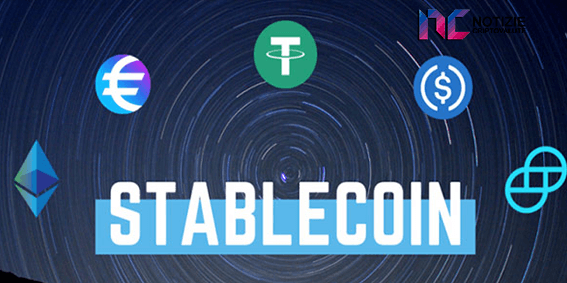Contents
What is a stablecoin?
Why could they play an important role in the future cryptocurrency economy? In today's guide, we will take a closer look at the stablecoins of the moment, those stable cryptocurrencies that have almost no volatility thanks to the fact that their value is anchored to that of a national currency or an external asset.
We will try to understand not only the usefulness of these new cryptocurrencies, but also the investment possibilities they offer us, as well as the possibilities of using them as a means of payment or as a store of value.
Is there anything good about these stablecoins? Why have so many people been interested in them in the past few months? Let's take a look together, in a comprehensive guide that aims to provide comprehensive advice for the investor.
What are stablecoins?
Stablecoins are cryptocurrencies that base their value on that of an external asset, usually a fiat currency such as the US dollar.
The goal is precisely to keep the value of the token in question stable, anchoring its value to assets that are generally more stable than Bitcoin and other altcoins.
There are, as we will see later in our guide, different methods or techniques used to keep the value of the token anchored to that of an underlying, there are also different types of underlyings, as we have said such as traditional currencies or cryptocurrencies, or even physical assets. (as in the case of precious metals).
What are the most interesting features of Stablecoins?
There are several features that make stablecoins attractive for certain categories of investors, or rather for those who want to use them primarily as a medium of exchange and store of value.
The value of stablecoins is precisely anchored to another asset and therefore does not follow the price logic of traditional cryptocurrencies;
Pegging is done off-chain, i.e. outside the reference circuit of cryptocurrencies, often with the intervention of regulated third-party financial authorities (this is not always the case, and we will have the opportunity to deal with it later in our advice).
The basic idea, as we have already said, is to eliminate at least part of the volatility that has always characterized traditional cryptocurrencies. Looking at what has happened since the dawn of the industry, it is not difficult to respond to many trading days where values have moved in double digits, a volatility that we can hardly encounter in other types of assets.
Possible uses of stablecoins
With the information we have so far, one might wonder why we should invest in stablecoins rather than directly in the underlying they are pegged to.
Gold is one of the most common underlyings for stablecoins
There are several clever and interesting use cases involving these cryptocurrencies:
For high-inflation economies: in this case, stablecoins can protect the purchasing power of citizens and residents. In general, a medium of exchange used that could, for example, have the stability of gold or a foreign currency, but using a digital superstructure, based on the blockchain with all the technical advantages that this solution entails;
Hedging: in finance, those who invest large amounts of capital know how important it is to move into counter-related activities. The convenience of trading and holding cryptocurrencies, combined with the price stability of the underlying assets, can offer a very attractive solution for hedging.
The different types of stablecoins
We can basically divide stablecoins into three macro-groups, depending on the category of the underlying asset.
On the one hand, we have stablecoins that have a fiat currency as their underlying asset, i.e. a national or international currency, as can be the case with the co-currents stablecoins backed by the euro or the US dollar.
On the other hand, we have stablecoins backed by so-called commodities, usually precious metals. Gold or other precious metals have been used so far, but theoretically there is no limit to this use on other financial assets and no stablecoins.
Stablecoin with underlying currency
Stablecoins with an underlying currency allow a token whose value is precisely anchored to that of a "real" currency. Typically, the dollar was used, but again, nothing prohibits the use of other types of fiat currencies.
The issuance and management process is relatively simple to understand:
The capital is raised in the currency you will use as the underlying
A third entity will act as a keeper
Tokens are issued
They are usually distributed via exchange or direct sale
The ratio used is 1: 1, generally 1 token is worth 1 unit of the currency we used as the underlying.
The dollar is also a well-used underlying of stablecoins
The typical problem of this type of solution is that all the decentralization typical of blockchain-based systems is lost.
Another problem is the trust of the central authority: whoever manages the token must, at some level, be in a relationship of trust with those who use the stablecoin.
Typically, a third-party verifier is used to produce stablecoins based on a currency, at the correct exchange rate of the token for the currency.
It is an extremely simple and stable system, provided, of course, that all the people involved do their part.
Some examples of stable money-based currencies
There are already some stablecoins backed by fiat currencies, here are some examples:
Tether: backed by the US dollar and currently moving the largest volumes. The central authority is Tether Limited. The system is widely used to allow cryptocurrencies, for example, to temporarily hold a stable, dollar-backed value without necessarily having to sell their cryptocurrencies for real dollars. There are doubts that Tether actually has reserves of dollars that correspond to the issued tokens, as there are no reliable third-party authorities that have certified the perfect match;
TrueUSD: Created as a more transparent alternative to Tether. In fact, they are used with a system of smart contracts with parity between dollar reserves and issued tokens. It is the second most traded stablecoin in the world.
Stablecoins based on raw materials
The main assets used are precious metals, especially gold, which is considered a safe haven and has a stable value.
In this case, the match is between a token and a certain amount of gold.
The mechanism of operation is more or less the same as what we have just seen: the gold is guarded by a third authority who should at the same time make sure that the tokens correspond to the quantity of gold.
The procedure is as follows:
Capital is raised which is then used to buy gold;
The gold is deposited
Advantages and disadvantages of stablecoins
There are some advantages and disadvantages of stablecoins over traditional cryptocurrencies and fiat currency. As for the benefits:
They are backed by real commodities: which means that those who have the tokens can always convert the stablecoin with the underlying;
They are relatively stable: considering the volatility of gold (minimal) or oil (certainly higher);
Liquidity: Tokens are extremely liquid, often more liquid than OTC contracts that frequently trade on this type of asset.
Among the undeniable disadvantages:
The system is centralized: once again, the advantages of a distributed security and guarantee network are lost;
Controls and security: the issuer and those involved in creating certificates of deposit will need to have confidence.
Examples of stable commodity coins
For now, the only stable commodity-based currency worth mentioning is Digix / DGX, an ERC-20 token that has gold as its underlying.
The anchor gold is held in the Singapore Safe House and the value of the token is entirely backed by gold.
Control is entrusted to a service that operates on the Ethereum blockchain and is verified every three months by independent authorities.
Stablecoins backed by an underlying cryptocurrency
The concept in question may seem much stranger, as we said at the beginning that one of the advantages of stablecoins is that they eliminate the volatility of the cryptocurrencies themselves.
In fact, this type of currency is used with the integration of smart contracts that also take advantage of collateral transactions to reduce the risks associated with volatility.
It is therefore possible to use such a token to reduce volatility, even by combining the pegging to a basket of cryptocurrencies rather than a single cryptocurrency.
The inclusion in this guide of such back-to-back checkers is certainly questionable: they have a more complex functioning and above all very different from the other examples we have done just above.
However, they are more financial instruments than instruments of exchange, and are likely to have some significance in some contexts.
The latest: Stable Coin “fiat
Yes, crypto tokens can also be issued like the processes we are used to seeing with traditional currencies.
In this case, there is a central authority that issues coins and destroys them, trying to keep the price as close as possible to that of the US dollar (or other reference commodity).
Petro, the Venezuelan government's stablecoin
Unlike other categories of stablecoins, in this case we are faced with a completely centralized process, which does not provide for the accumulation of reserves and therefore opens the field to certainly deeper criticisms, also considering the general attitude of those interested in cryptocurrencies.
In fact, very complex systems are put in place to ensure that the tokens correspond perfectly to the value of the reference dollar.
The most important example: base
Base, formerly Basecoin, is a stablecoin that still has its value in US dollars. It uses complex algorithms that modify the token supply, adapting it precisely to the value of the dollar.
In the event that the base value exceeds one dollar, the tokens are destroyed among those in circulation, otherwise they are produced and put on the market.
The behavior is similar to that of a central bank, albeit with completely different implications, but these will necessarily have to be analyzed separately.
Conclusion: are stablecoins useful?
Talking about Stablecoin as if it were a homogeneous category is certainly a mistake. In today's guide, we have certainly learned to perceive the differences between one project and another, and above all to understand the objectives that led to the creation of this type of token.
They will certainly be able to find specific areas of application and will likely thrive in their field of reference.
However, those looking for the purest experience of cryptocurrency should certainly look elsewhere: not all of these projects have the full confidence of investors (in terms of distribution, who runs the project and who they oversee).
Also when it comes to trading, if your goal is to speculate on the value of cryptocurrencies, stablecoins are not the tools for you.
Conversely, stablecoins backed by commodities or incorporating advanced collateral can be a very attractive tool for advanced trading.
However, we are facing a new appreciation of the world of cryptocurrencies which, while taking up some fundamental themes, is developing on a completely different path.
Before jumping on the bandwagon in search of the right opportunity, our advice is to thoroughly analyze the stablecoin that interests us and then decide if and when it could be useful for us.



I simply could not leave your site before suggesting that I extremely loved the usual info a person provide for your visitors? Is gonna be back frequently to check out new posts